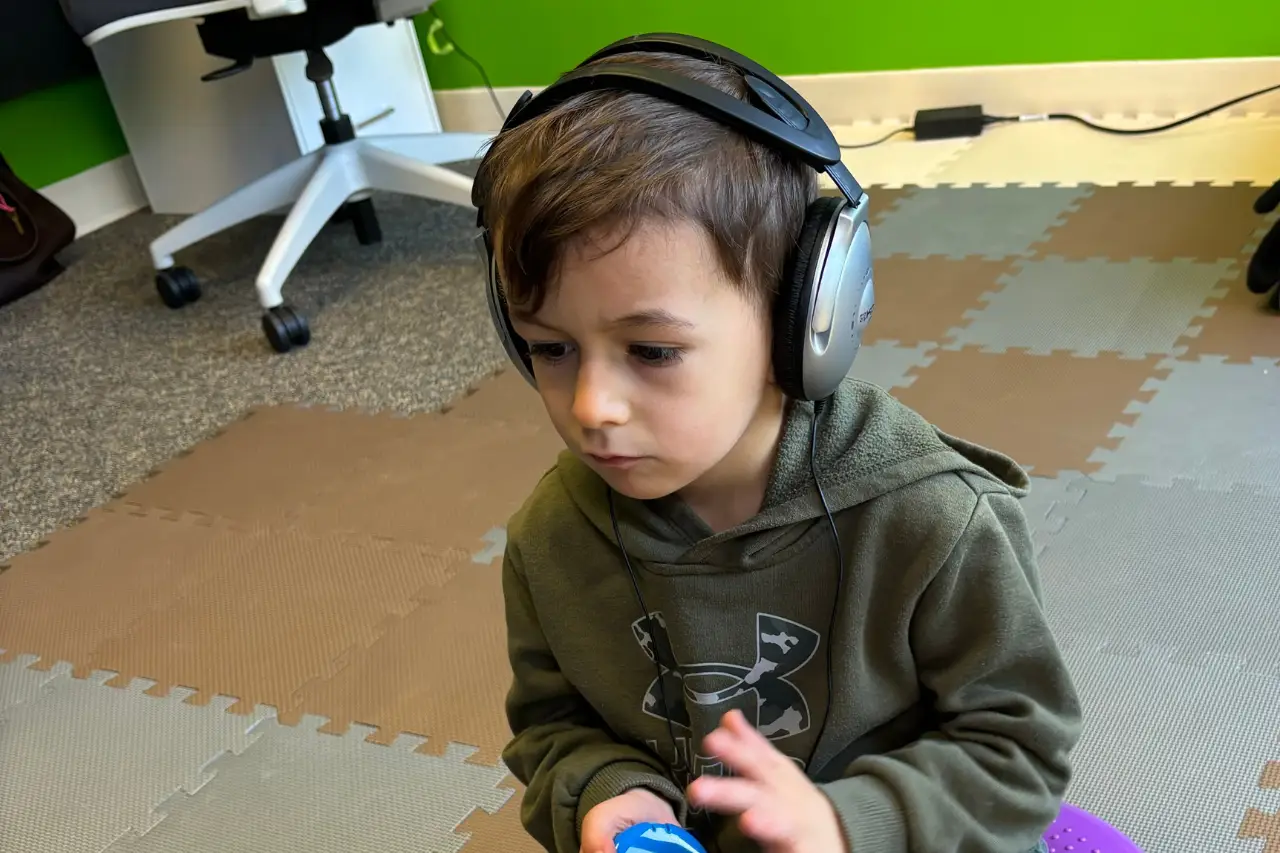The best thing you can do for your child is to understand what’s going on in their brain and take the necessary steps to correct the issue.
Research shows that Autism is caused by the lack of maturation of the brain because of retained Primitive Reflexes, which causes the neuropathways of right hemisphere of the brain to be less developed than the left hemisphere.
The NeuroFiT Program uses a combination of physical, sensory, and cognitive activities to integrate retained primitive reflexes and stimulate the weaker hemisphere of the brain resulting in the lessening or removal of the social, emotional, behavioral, and academic issues that are part of Autism. Start with an assessment, which will determine exactly what’s going on in your child’s brain, followed by a program as unique as your child.
On the other hand, if your intent is to manage your child’s autism, here are seven ways you can help your child achieve success and happiness.1qq 2
Make a routine: There are many different things to do every day. Sometimes, it’s hard to find a routine that works for everyone. If you want your child to have a successful life, you need to set up a routine for him especially autism in toddler stage.
A routine will help your child get up and go to bed. It will also help him wake up and go to sleep at a regular time. It can be difficult for a person with autism to follow a routine.
It’s important that you try to help your child to have a routine because it will make him more stable.
You can start by planning a daily schedule, such as breakfast, lunch, and dinner. This will help your child to know what to do when. It is important to keep your child on schedule because this will prevent him or her from getting sick.
This also ensures that he or she will not get a headache or feel tired. A schedule will also help your child to achieve success in school. If you are going to take your child to school, have a routine.
Also prepare their lunch in advance and give them enough time to eat it before leaving the house. If you don’t give your child a schedule, they may have a hard time keeping track of the time.
This can make them feel stressed and anxious. Always try to help your child with autism achieve success and happiness by making a routine for them.
Be consistent and communicate clearly: When it comes to communicating, one of the things that a child with autism has difficulty with is consistency. It’s very hard for them to understand and accept something that is different from what they have always done.
They may not know how to explain what is going on inside their head and they may not understand why you are doing what you are doing.
When it comes to being consistent, it means that when you do one thing, you do it every single time. If you’re talking to someone, it means that you talk to that person every time you see that person.
Make it a habit to be consistent. It’s also good if you explain to your child why you are doing what you are doing.
It is also important to be clear. Children with autism usually have trouble understanding and accepting language that is not very clear and specific. They may even misinterpret it and take it the wrong way.
In short, it is very important to be consistent and be clear in communicating with your child. You don’t want your child to be overwhelmed.
It will take a lot of patience on your part to help them understand what you are trying to communicate. The more you talk to them about these things, the better they will understand.
Pay attention to your child’s sensory sensitivities: Children who are autistic can have many different types of difficulties. The best way to help your child achieve success and happiness is to pay attention to your child’s sensory sensitivities. Help your child stay alert and be aware of his or her surroundings.
Help them by having them climb or walk on uneven, textured surfaces as this will provide stimulation they might not otherwise get.
Provide your child with mirrored surfaces to see their reflection. This will become especially important as they become more aware of their bodies.
Dissuade your child from screentime on a phone, tablet, or television. These activities not only increase the child’s foveal vision, but they also deplete the right hemisphere of the brain.
Notice if there is something wrong and tell your child if something happens to him or her. Make sure that your child has a comfortable place to sleep at night. Try to keep your child awake as much as possible during the day.
Make time for fun: There is a saying that goes “you can’t have a good life without making time for fun”. If you want to enjoy life more, have more fun. If you want your child with autism to achieve success and happiness in life, make time for fun.
Yes, children with autism are known for their lack of self-control. They tend to get frustrated easily. Yet, the best thing you can do to help them is to take time for fun. You must let your child know that it is okay to be excited and to have fun.
You can do that by going on a picnic, playing a game of touch football, watching a movie, or taking a trip to a park. All these things will help your child to stay happy and to focus on being positive.
You can also teach your child how to handle his frustration by helping him to find another way to deal with it.
That is, when your child gets angry or frustrated, help him to calm down by telling him that there are other ways to solve the problem. When you do this, you are teaching your child to overcome his anger and to use his self-control.
Keep in mind that you need to find activities that you both can do together. This will help your child to be happy and it will also help him to learn new things.
Be willing to share your own fun experiences with him. It’s important to make time for fun because when you are having fun, you will be happier, and your child will be better too.
Manage changes and transitions: Transitioning from one thing to another is a challenge to anyone, but it’s especially hard for people with autism.
They are not good at processing information quickly. It can take them a long time to learn what to do when things change. This makes it difficult for them to keep up with everything they are doing and learning.
That’s why they have trouble transitioning from one thing to another. You can help your child manage transitions by explaining them in a clear way. Additionally, use a timer to manage the amount of time on any activity or let your child know how much time they have remaining on an activity. Pictures of each activity can be helpful in explaining what the next activity is as well as a calendar to point out activities on each day. If your child doesn’t understand what you are saying, then it will be difficult for him to cope with changes and transitions.
Work with their carers: There are many things that you can do to help your child succeed and find happiness. One of them is to work with your child’s carer. Share knowledge with your children’s carers and build a good relationship together.
Carers are the ones who can provide the most help to your child with autism. They know how to deal with your child, and they know how to communicate with him or her.
If you want your child to achieve success and happiness in life, work with his or her carers. Make sure that they are always prepared and that they understand what needs to be done to keep your child safe.
Make sure you take care of yourself: This is important because when you feel good about yourself, you will have the energy to take care of your child. If you feel happy, then you will be more motivated to make things better for your child.
When it comes to taking care of yourself, make sure that you get enough sleep, eat a balanced diet, exercise regularly, and stay hydrated. Spend time with your family and friends.
Doing this will help you to maintain a healthy lifestyle. It will also help you to remain positive. Do this because being happy will give you the energy to help your child succeed and find happiness in life.
It is possible for anyone with autism to be happy and to succeed in life. However, the key to making things happen is to find ways to help them. Try to understand what makes them happy and what brings them joy.
Then, make sure that they have the chance to express their feelings and to share their thoughts and feelings. Make sure that they are comfortable and that they have the things that they need to feel good about themselves.
When it comes to helping people with autism to be happier and to succeed, remember that it is important to understand their needs, feelings, and desires. It’s also important to know how to deal with their problems, their anger, and their frustration.
If you can do all of this, then you will be able to help your child to be happy and to succeed in life.






